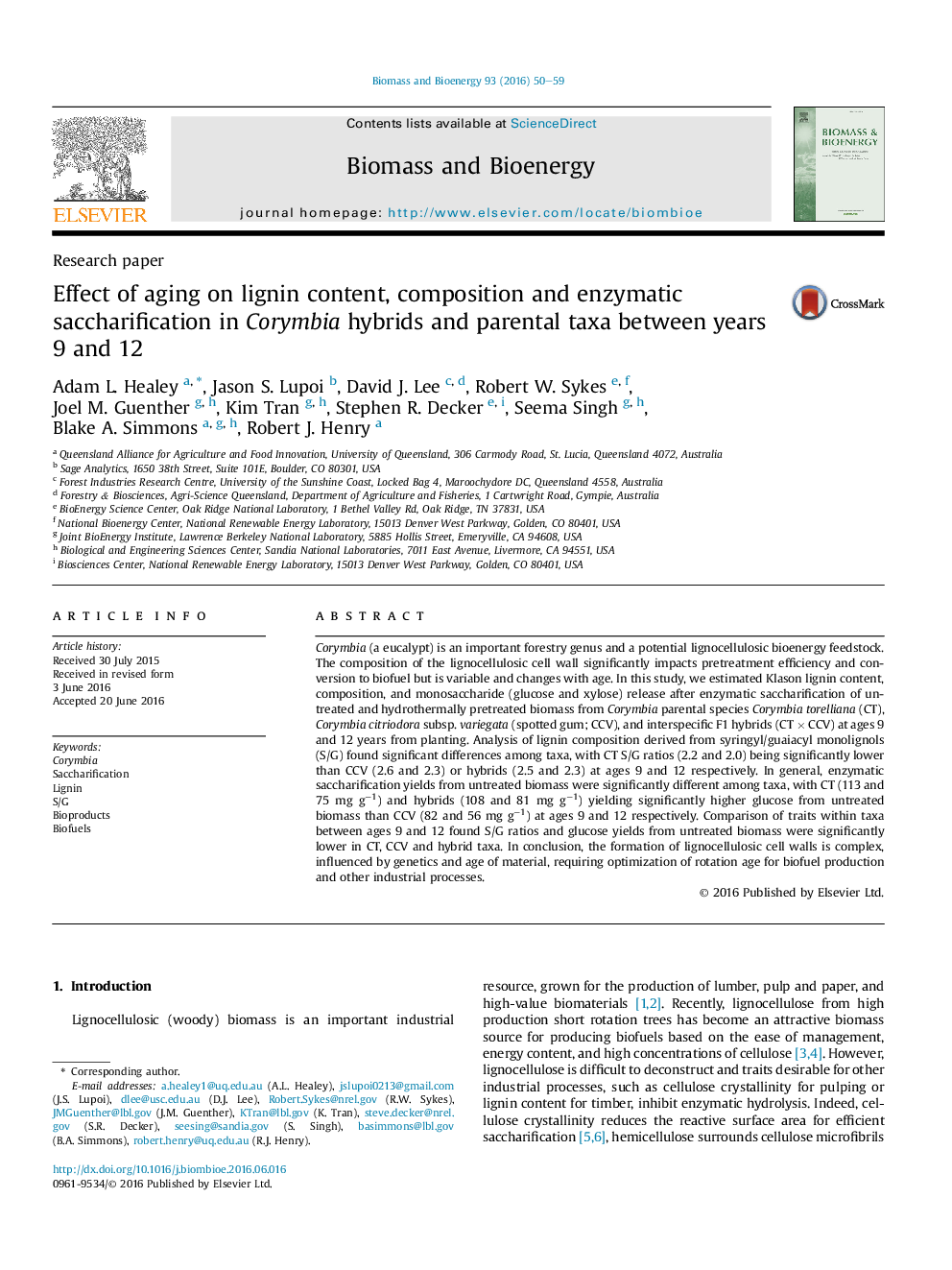| Article ID | Journal | Published Year | Pages | File Type |
|---|---|---|---|---|
| 7063154 | Biomass and Bioenergy | 2016 | 10 Pages |
Abstract
Corymbia (a eucalypt) is an important forestry genus and a potential lignocellulosic bioenergy feedstock. The composition of the lignocellulosic cell wall significantly impacts pretreatment efficiency and conversion to biofuel but is variable and changes with age. In this study, we estimated Klason lignin content, composition, and monosaccharide (glucose and xylose) release after enzymatic saccharification of untreated and hydrothermally pretreated biomass from Corymbia parental species Corymbia torelliana (CT), Corymbia citriodora subsp. variegata (spotted gum; CCV), and interspecific F1 hybrids (CT Ã CCV) at ages 9 and 12 years from planting. Analysis of lignin composition derived from syringyl/guaiacyl monolignols (S/G) found significant differences among taxa, with CT S/G ratios (2.2 and 2.0) being significantly lower than CCV (2.6 and 2.3) or hybrids (2.5 and 2.3) at ages 9 and 12 respectively. In general, enzymatic saccharification yields from untreated biomass were significantly different among taxa, with CT (113 and 75 mg gâ1) and hybrids (108 and 81 mg gâ1) yielding significantly higher glucose from untreated biomass than CCV (82 and 56 mg gâ1) at ages 9 and 12 respectively. Comparison of traits within taxa between ages 9 and 12 found S/G ratios and glucose yields from untreated biomass were significantly lower in CT, CCV and hybrid taxa. In conclusion, the formation of lignocellulosic cell walls is complex, influenced by genetics and age of material, requiring optimization of rotation age for biofuel production and other industrial processes.
Related Topics
Physical Sciences and Engineering
Chemical Engineering
Process Chemistry and Technology
Authors
Adam L. Healey, Jason S. Lupoi, David J. Lee, Robert W. Sykes, Joel M. Guenther, Kim Tran, Stephen R. Decker, Seema Singh, Blake A. Simmons, Robert J. Henry,
